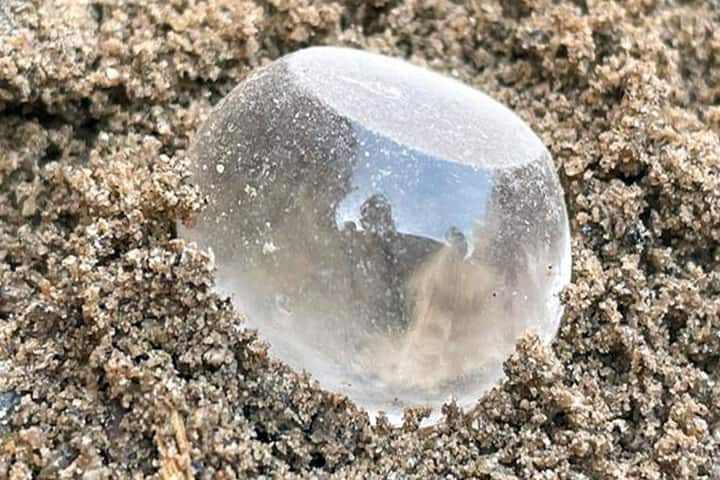The ninth phase of diggings going on in Keeladi in Sivaganga district which is located 12 kilometres of Madurai in Tamil Nadu has yielded significant artefacts. One of them is a crystal quartz weighing unit which is from the Sangam era.
Interestingly the ongoing work at several sites in the State has extended Sangam Era’s timeline from 300 BCE to 600 BCE.
This crystal was found 175 cm beneath the ground and is the first of its kind discovered in Keeladi where work was commenced in 2014. It is of novel design and in spherical shape, with the top and base cut off and made flat and smooth.
The State Archaeology Department in its statement has revealed that the size of the unit is 2 cm in diameter, 1.5 cm in height and that it weighs 8 grams and is transparent.
Scholars are studying this crystal very keenly as in the past the weighing units found were made of stones. Talking about this aspect, an expert from the department told the media that it was confirmed that the stone was used with the objective of weighing and that while units made of stone had been found in the past, none were made of minerals.
The expert added that such crystal units were used for weighing objects which had high value like precious and semi-precious stones and gold. The reason for this was that mineral units provide accurate results and are not dependent on climate.
Though detailed studies of this unit are being carried out, the scholars have estimated that it belongs to a period between 600 BC and 2nd Century AD and may have originated in the Kangayam area which is close to Coimbatore.
Apart from this a handmade snake figure with a red slip that has a rough surface was found. It is 6.5 cm in length, 5.4 cm in width and 1.5 cm in thickness. The experts also found an iron nail, black and red ware, terracotta hopscotch and red slipped ware.
So far in the ninth phase, the archaeologists have unearthed more than 200 artefacts. These include terracotta figurines and a gold ring.
Also read: Tamil Nadu launches Rs 5 crore mega excavation plan to shed light on region’s rich history




















